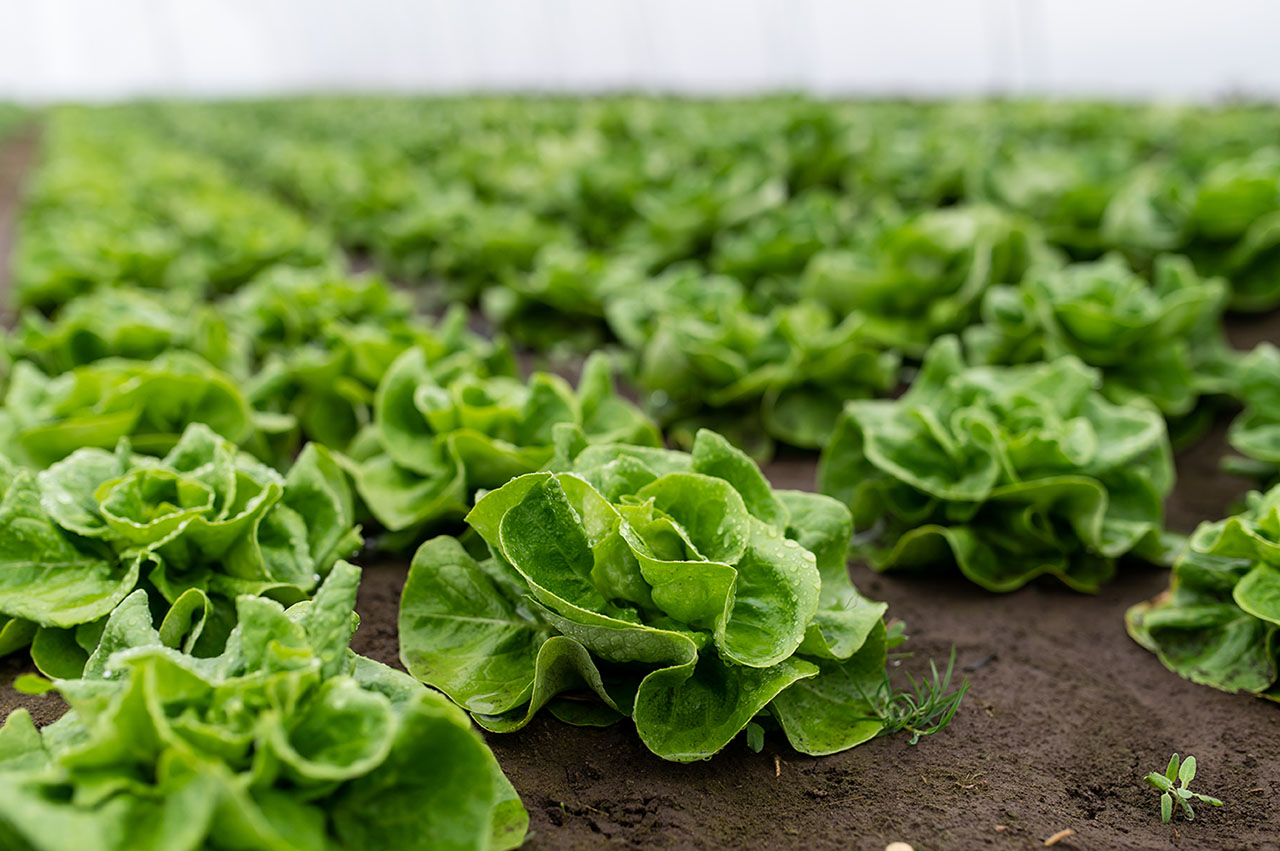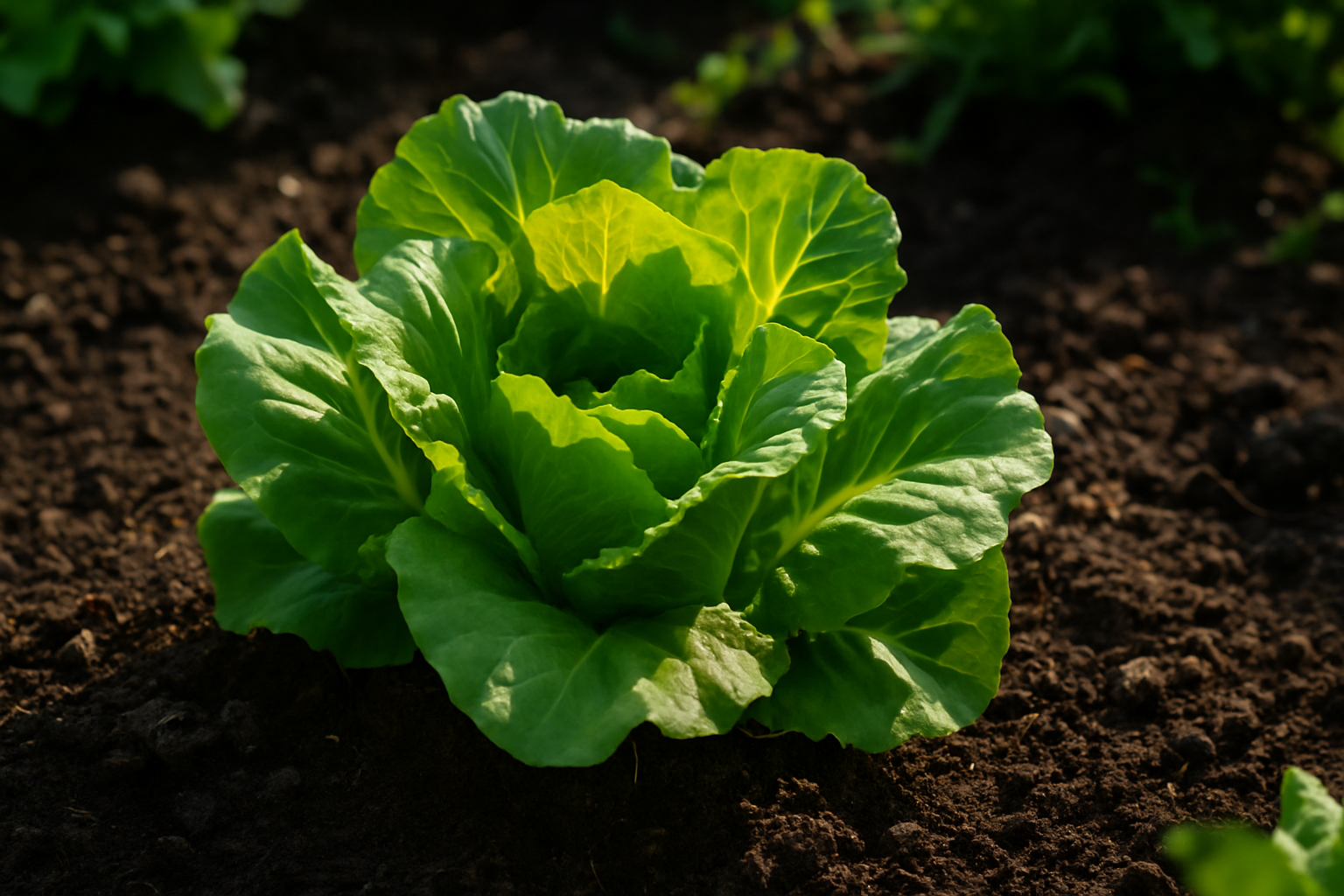A Beginner’s Guide to Planting and Harvesting Lettuce
Everything You Need to Know to Grow Crisp, Delicious Greens From Seed to Salad Bowl
is your best friend. It’s fast-growing, versatile, doesn’t take up much space, and you don’t need a green thumb to succeed. From garden beds and containers to even windowsills, lettuce is one of the easiest and most rewarding leafy greens you can grow—whether you want a full head or baby leaves for a fresh salad.
But don’t let its simplicity fool you—growing lettuce well still requires some know-how, especially if you want crisp, tender leaves that aren’t bitter or bolting before you’re ready to harvest. In this detailed guide, you’ll learn everything from choosing the right varieties and sowing at the right time to keeping pests away and knowing exactly when and how to harvest for maximum flavor and yield.

1. Understanding the Basics: What Makes Lettuce a Great Crop for Beginners
Lettuce (Lactuca sativa) is a cool-season leafy vegetable that’s part of the daisy family. It grows quickly and thrives in mild temperatures, typically between 45°F to 75°F (7°C to 24°C). It’s also a low-maintenance crop—meaning it doesn’t require heavy fertilizing, staking, or complicated care routines.
Here’s why lettuce is a beginner-friendly crop:
- Short time to harvest – as little as 30 days for baby greens
- Compact space needs – can grow in small containers
- High success rate – germinates easily and grows fast
- Multiple harvest methods – cut-and-come-again or full head harvest
It’s a forgiving plant that gives you food fast and helps you gain confidence in your gardening journey.
2. Choose the Right Lettuce Variety for Your Climate and Taste
There are several types of lettuce, each with a different flavor, texture, growth habit, and ideal growing conditions. Choosing the right type will ensure your garden matches your culinary preferences and seasonal climate.
Main Types of Lettuce:
| Type | Description | Days to Maturity | Best Use |
|---|---|---|---|
| Leaf | Loose leaves, harvest anytime; soft or crunchy | 30–45 days | Cut-and-come-again salads |
| Butterhead | Soft, buttery leaves in small heads | 50–65 days | Sandwiches, wraps, salads |
| Romaine (Cos) | Tall, crisp heads with sturdy ribs | 60–75 days | Caesar salads, grilling |
| Crisphead (Iceberg) | Tight, crunchy heads; harder to grow in home gardens | 70–85 days | Crunchy salads, burgers |
For beginners, leaf and butterhead lettuces are the easiest and most productive. They tolerate a wider range of conditions and offer frequent harvests without waiting for full head formation.
3. When to Plant Lettuce for the Best Results

Since lettuce loves cool weather, the timing of your planting is crucial. It bolts (goes to seed) and becomes bitter in high heat, so aim to grow it in spring and fall.
Planting Windows by Climate:
- Cool Climates (Zones 3–6):
- Early spring: Sow as soon as soil is workable (4–6 weeks before last frost)
- Late summer: Sow again 6–8 weeks before first frost
- Mild Climates (Zones 7–9):
- Spring and fall for main crops
- Winter growing possible with protection
- Hot Climates (Zones 10–11):
- Grow in late fall to early spring
- Provide partial shade in warmer months
4. How to Sow Lettuce: Direct Seeding vs. Transplanting
Lettuce seeds are small but easy to handle. You can direct sow them into garden beds or start them indoors and transplant seedlings.
Direct Sowing Steps:
- Prepare fine, loose soil with compost mixed in.
- Make shallow furrows (¼ inch deep).
- Sow seeds about 1″ apart; rows 8–12″ apart.
- Gently cover and mist with water.
- Thin to 4–6″ apart once true leaves appear.
Transplanting Tips:
- Start seeds indoors 3–4 weeks before your last frost date.
- Transplant when seedlings have 3–4 leaves.
- Be gentle—lettuce roots are shallow and sensitive.
5. Ideal Growing Conditions for Healthy Lettuce
Lettuce is relatively undemanding but thrives best when certain conditions are met:
- Sunlight: 6 hours of full sun, or partial shade in warm climates
- Soil: Loose, fertile, well-draining; pH 6.0–7.0
- Water: Consistent, even moisture; never let it dry out
- Spacing: 6–12″ depending on variety; avoid overcrowding
- Temperature: Ideal range is 55°F to 70°F (13°C to 21°C)
Preventing Bolting (Going to Seed Too Early):
- Provide shade during hot spells
- Mulch to retain moisture
- Keep soil cool with regular watering
6. Harvesting Lettuce: When and How for Maximum Yield

There are two main ways to harvest lettuce, depending on your variety and preferences:
1. Cut-and-Come-Again Method (best for leaf types):
- Harvest outer leaves 2″ above the soil when 4–6″ tall
- Let the center grow for future harvests
- Repeat every few days for ongoing salads
2. Full Head Harvest (best for romaine, butterhead, crisphead):
- Harvest once head is firm and full-size
- Cut at the base with a clean knife
- Rinse and chill immediately to preserve freshness
Lettuce is best harvested in the early morning when leaves are crisp and full of moisture.
7. Common Pests and Problems (and How to Fix Them)
While generally easy to grow, lettuce can face issues, especially with pests and weather changes.
Top Problems:
| Problem | Cause | Solution |
|---|---|---|
| Bolting | Heat, long daylight hours | Provide shade, plant earlier, choose bolt-resistant varieties |
| Bitter leaves | Too much sun or age | Harvest earlier, water consistently |
| Aphids | Insects feeding on leaves | Spray with neem oil or water + soap |
| Slugs & snails | Moist, shady environments | Use crushed eggshells, copper tape, or hand-pick at dusk |
| Damping-off | Fungus killing seedlings | Avoid overwatering, improve air circulation |
8. Storage Tips: How to Keep Lettuce Fresh After Harvest
Lettuce is highly perishable, especially after harvesting. To keep it fresh and crisp:
- Rinse in cool water immediately after harvest
- Dry thoroughly with a salad spinner or towel
- Store in a breathable container or produce bag
- Keep in fridge’s crisper drawer (ideal temp: 34–36°F)
Pro Tip: Wrap leaves in a damp paper towel before refrigerating to extend freshness for up to 7–10 days.
9. Companion Plants That Grow Well With Lettuce

Lettuce is a friendly neighbor in the garden and benefits from being planted with certain crops.
Good Companions:
- Carrots (deepen the root zone)
- Radishes (grow quickly and don’t compete)
- Onions and garlic (repel aphids)
- Marigolds (natural pest control)
- Strawberries (mutual ground cover benefits)
Avoid planting lettuce near brassicas like cabbage and broccoli, which can outcompete it.
Table of Contents
FAQs: Lettuce Planting & Harvesting
Q1: How long does lettuce take to grow?
It depends on the variety. Leaf lettuces are ready in 30–45 days, while heading types like romaine may take 60–75 days.
Q2: Can I grow lettuce indoors?
Yes! Lettuce grows well under grow lights or in sunny windows. Choose compact varieties like ‘Little Gem’ or leaf lettuce mixes.
Q3: Why is my lettuce bitter?
Bitterness is usually caused by heat stress or harvesting too late. Keep the plant well-watered and pick early in the morning.
Q4: What is the best lettuce for salads?
Most leaf lettuces, butterheads, and romaine types offer great texture and flavor. Iceberg is crisp but low in nutrition compared to darker leaves.
Q5: How do I get lettuce seeds to germinate in summer?
Lettuce seeds need cool temperatures (40–75°F) to germinate. Try refrigerating seeds for a few days or starting them indoors under shade.
Q6: Can I regrow lettuce from scraps?
Yes, you can regrow leaf lettuce from the base. Place the stump in water on a sunny windowsill and wait for new leaves to sprout.
Conclusion: From Seed to Salad—Let Lettuce Teach You to Garden

Lettuce is the ultimate beginner’s crop—and with the right techniques, even small spaces or containers can give you a steady supply of fresh, crispy greens. Whether you love the soft bite of butterhead, the crispness of romaine, or the rapid growth of looseleaf blends, lettuce rewards you with quick harvests, minimal maintenance, and the satisfaction of growing your own food. Let this easy yet versatile green be your first step into a lifetime of gardening success. With every harvest, you’ll build your confidence—and maybe even eat more salads too!

